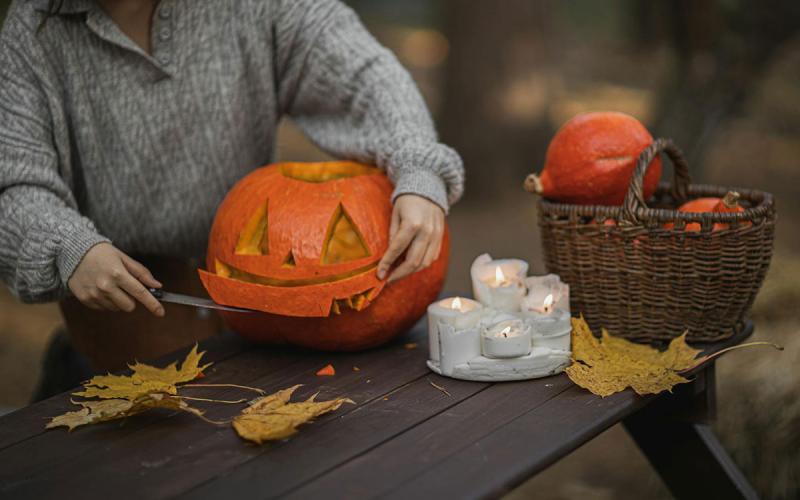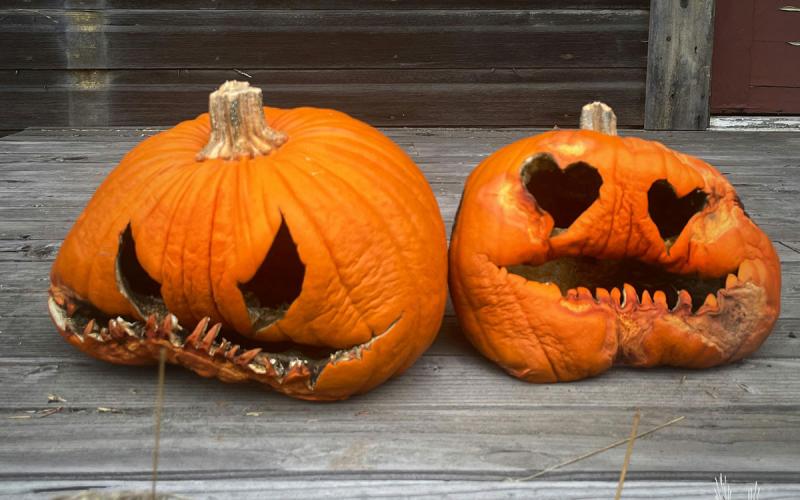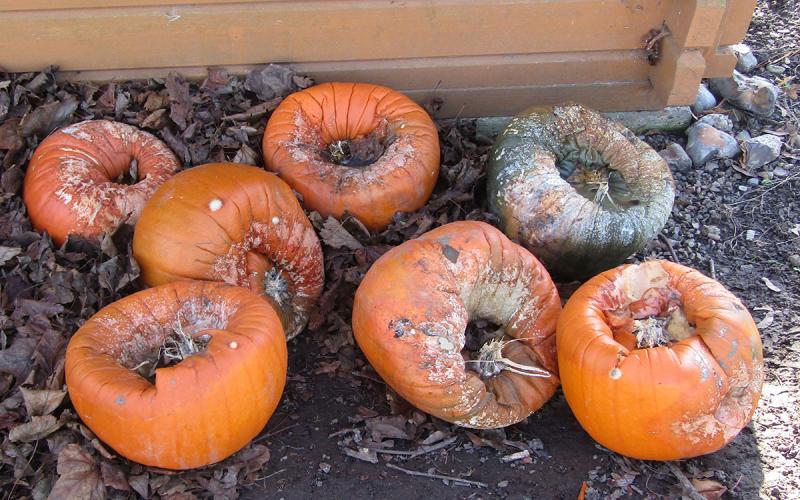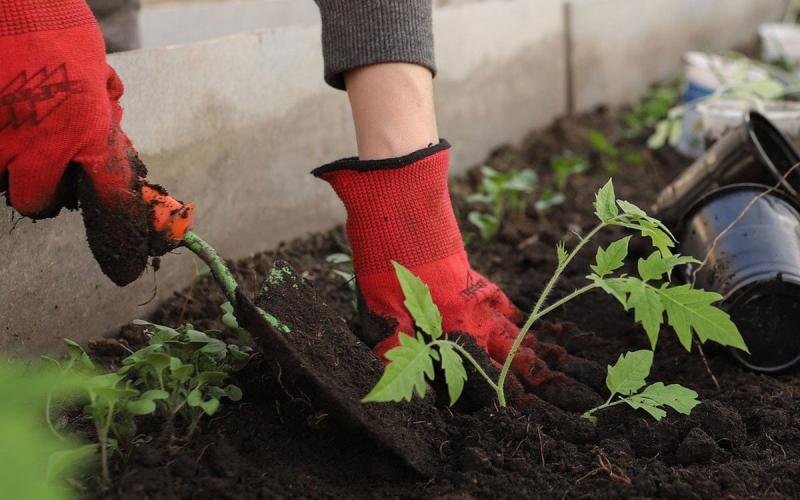Introduction

During the fall, and especially around Halloween, carving pumpkins into jack-o’-lanterns is a creative tradition enjoyed by people of all ages (Figure 1). These festive creations can vary widely in shape, size, and level of complexity. The finished product often leaves the carver feeling proud and eager to display their work. Unfortunately, within just a few days, the pumpkin may begin to discolor, collapse inward, or develop a foul odor (Figure 2). These are signs of decay caused by pathogenic organisms.
Pathogenetic Infection
When carving a pumpkin, cutting into the fruit and removing the seeds and fibrous strands creates a cavity and exposes additional surfaces, including the rind and pulp (mesocarp). This exposure makes the pumpkin more susceptible to environmental factors, such as temperature, light, and humidity, which can create favorable conditions for pathogenic organisms. Fungi, bacteria, and fungal-like oomycetes may then infect and degrade the pumpkin’s tissues.

Mold growth on the pumpkin's tissues is often one of the first visible signs that a jack-o’-lantern is beginning to decay. Molds are fungal microorganisms that are capable of surviving in a wide range of environments.
Most molds spread by releasing tiny, lightweight spores that travel through the air, settle on pumpkin tissue, and germinate when conditions are favorable, typically in warm, humid environments. These spores are extremely common and can be found virtually everywhere.
Once established, molds infect the pumpkin by developing hyphae and secreting digestive enzymes. As the colonies expand, the characteristic “soft and fuzzy” patches of mold in various colors become visible (Figure 3). Common molds include Cladosporium, Penicillium, Aspergillus, Fusarium, and Alternaria.

Other fungi commonly found in soil, such as Stagonosporopsis, Fusarium, and oomycetes like Phytophthora cactorum, may also be present on the surface of jack-o’-lanterns from the field. These organisms often appear later but grow in similar ways.
Bacterial rots, also called soft rots, often lack visible fuzz or external growth but appear as sunken, soft, darkened areas. Jack-o’-lanterns gradually soften and decay as bacteria secrete enzymes that break down fibrous tissue and feed on the sugars stored in the fruit. Common bacterial rots include Pectobacterium, Xanthomonas, and a variety of environmental bacteria that exploit the softening fruit. Like soil fungi, these bacteria are common in soil but typically do not show visible signs of rot until several weeks have passed.
While pathogens play a natural and important role in the decomposition of organic matter, they can also cause disease in plants, animals, and humans, while accelerating the decay of jack-o’-lanterns.
Preservation Methods
Pumpkin carvers can use several techniques to slow or prevent the spread of pathogens and help their jack-o’-lanterns last longer. Here are some recommendations:
- Thoroughly clean your pumpkin before cutting into it, removing any soil or debris that may be on the rind.
- Sterilize carving equipment (e.g., spoons, knives, saws) to reduce the risk of spreading pathogens, especially when working on multiple pumpkins.
- When removing the pumpkin’s insides (seeds and fibrous strands), take extra care to remove as much as possible. This reduces the surface area where pathogens can grow.
- Once your jack-o’-lantern is complete, dip, wash, or spray the carving with a 10 percent bleach solution or another disinfectant (e.g., soaps). This will kill microorganisms on the pumpkin.
- Rub petroleum jelly on the exposed surfaces to help lock in moisture and slow the drying process.
- Use an electric light or glow stick instead of a candle. This prevents the pumpkin from “cooking” on the inside, which speeds up spoilage.
- Keep your jack-o’-lantern in an optimal temperature range of 50 to 60 degrees Fahrenheit. Warmer temperatures accelerate pathogen growth, while freezing temperatures (below 32 degrees Fahrenheit) damage the pumpkin’s tissue. Once thawed, frozen tissue decays quickly. Be mindful of both indoor and outdoor conditions when displaying your pumpkin.
References
- Coleman, S. 2022. Carving Pumpkins and Preserving Your Creations! North Carolina State University.
- Kasson, M. 2022. The science of keeping your jack-o’-lanterns mold free this Halloween. PBS News.
- A Brief Guide to Mold, Moisture, and Your Home. 2012. Environmental Protection Agency.
- Volesky, N. 2019. Jack-o’-lanterns: Prevent Your Carved Creation from Becoming a Fungal Fiasco. Utah State University.


